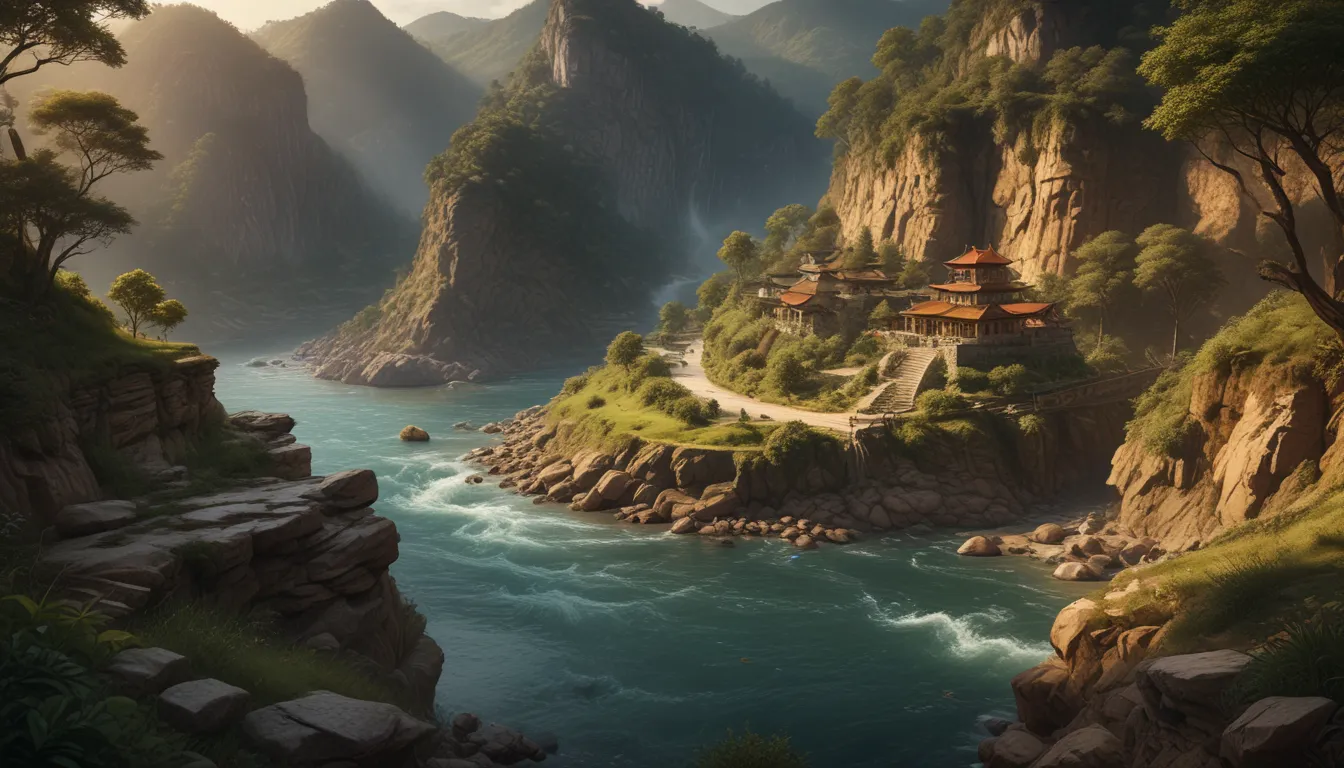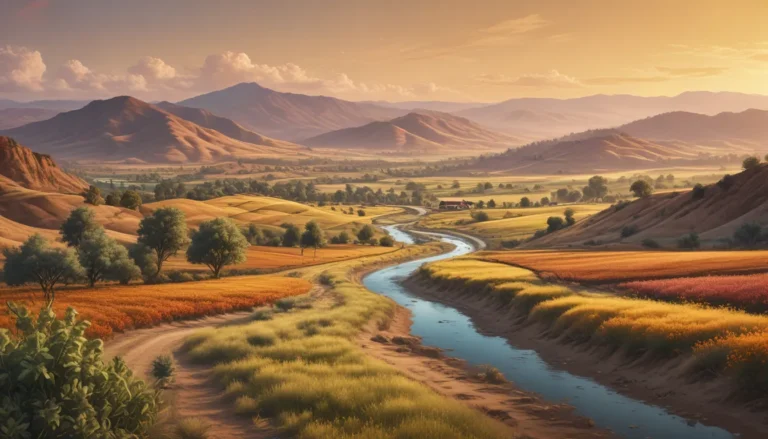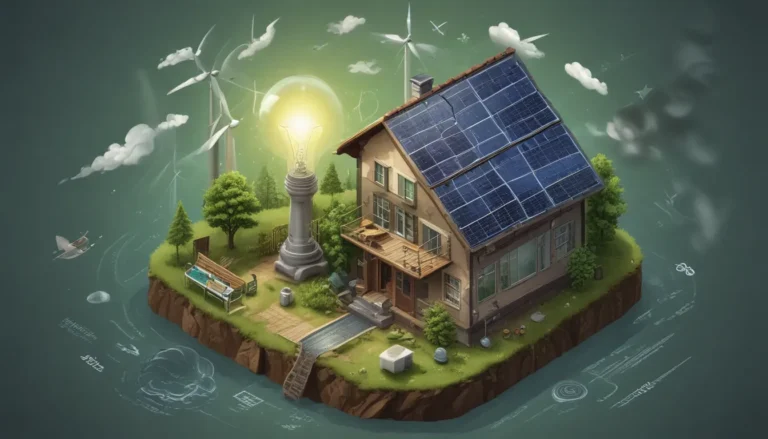A Note About Images: The images used in our articles are for illustration purposes only and may not exactly match the content. They are meant to engage readers, but the text should be relied upon for accurate information.
Are you intrigued by the wonders of the Earth’s geological history? Uplifted river terraces are a fascinating phenomenon that offers valuable insights into the dynamic changes that have shaped our planet over thousands of years. From climate shifts to tectonic activity, these terraces hold clues to the past that can deepen our understanding of the world we live in. In this article, we will delve into 13 intriguing facts about uplifted river terraces that will take you on a journey through time and space, showcasing the immense power and beauty of nature.
Discovering the World of Uplifted River Terraces
Uplifted river terraces are elevated landforms found along river valleys, formed by geological processes such as tectonic uplift and changes in sea levels. These stepped platforms offer important insights into the history of the landscape, providing a record of past periods of erosion, deposition, and the dynamic nature of the Earth’s surface.
Unraveling Earth’s Geological Changes
By studying uplifted river terraces, geologists can gain valuable information about the Earth’s geological changes. The different levels of terraces reflect past periods of erosion and deposition, offering a window into the planet’s history. These terraces serve as a testament to the dynamic nature of our planet’s surface and provide valuable clues about past rivers, climate shifts, and tectonic activity.
The Gradual Formation Process
The formation of uplifted river terraces is a gradual process that spans thousands of years. As rivers erode rock and sediment, the land is uplifted, leading to the creation of multiple terraces that represent distinct stages in the river’s history. Each terrace tells a story of the Earth’s evolution, offering a glimpse into the changes that have taken place over time.
The Diversity of Uplifted River Terraces
There are various types of uplifted river terraces, each formed by different geological processes. Alluvial terraces are created by the deposition of sediment carried by a river, while fluvial terraces result from the lateral migration and erosion of the river channel. Marine terraces form when sea levels change, altering the course of the river and shaping the landscape.
Reshaping the Landscape
Uplifted river terraces play a vital role in reshaping the landscape. As rivers carve through layers of rock and sediment, they expose the underlying geology, creating striking cliffs, gorges, and valleys. These landforms not only contribute to the scenic beauty of an area but also provide geologists with valuable insights into the region’s geological and environmental history.
Unlocking the Age of Terraces
Geologists use various dating techniques to determine the age of uplifted river terraces, such as radiocarbon dating and exposure dating using cosmogenic isotopes. These methods provide important insights into the timing of terrace formation, helping scientists unravel the complex processes that have shaped the landscape over time.
Understanding Climate Change
Uplifted river terraces serve as valuable indicators of past climate change. By analyzing the sediments and fossils found within the terraces, scientists can reconstruct past environmental conditions, helping to understand how climate patterns have fluctuated over thousands of years. This information is crucial for climate change research and provides valuable data for understanding our planet’s history.
Biodiversity Hotspots
Uplifted river terraces often support diverse ecosystems, providing habitats for unique flora and fauna. The varying elevations and microclimates within the terraces create a range of ecological niches, allowing different species to thrive. Protecting these habitats is essential for preserving biodiversity and maintaining the delicate balance of the natural environment.
Cultural Significance
Uplifted river terraces have significant implications for human settlements, with many ancient civilizations and modern cities located on or near these terraces. The flat, elevated platforms provided by these landforms have historically been attractive areas for settlement due to their fertile soils and proximity to water sources, highlighting their importance in human history.
Geotourism and Education
Uplifted river terraces hold immense geotourism and educational value, attracting visitors interested in learning about the Earth’s history and geological processes. Guided hikes along terraced pathways and interactive exhibits in visitor centers offer opportunities for people of all ages to engage with and appreciate the wonders of our planet.
Challenges in Preservation
Preserving uplifted river terraces poses challenges due to human activities such as urban development, deforestation, and unsustainable land use practices. Additionally, natural processes like erosion and weathering can slowly erode the terraces over time. Conservation efforts and sustainable land management practices are essential for ensuring the long-term protection of these valuable landforms.
Water Management and Flood Control
Uplifted river terraces play a crucial role in water management, with rivers cutting through terraces to create natural levees that help contain floodwaters and reduce the risk of inundation. Understanding the topography and characteristics of these terraces is vital for effective flood control and water resource management planning.
Embracing the Future of Research
Despite extensive research, there is still much to learn about uplifted river terraces. Ongoing studies and technological advancements continue to uncover new insights into the formation processes, geological history, and environmental significance of these intriguing landforms. As our understanding deepens, we can better appreciate the complexities of Earth’s dynamic landscape.
In conclusion, uplifted river terraces are a testament to the dynamic nature of our planet, offering valuable insights into the Earth’s geological history and the forces that shape our world. Studying these terraces not only allows us to understand the changing landscape over time but also provides practical applications in various fields. Whether you are a geology enthusiast, a nature lover, or simply curious about the wonders of our planet, exploring the world of uplifted river terraces is sure to leave you with a deeper appreciation for the mysteries of the Earth.
FAQs
Q: What are uplifted river terraces?
A: Uplifted river terraces are elevated landforms formed by the erosion and uplift of river systems over time.
Q: How are uplifted river terraces formed?
A: Uplifted river terraces are formed through a combination of tectonic uplift, erosion, and climate change, leaving remnants of old river channels at higher elevations.
Q: What information can uplifted river terraces provide?
A: Uplifted river terraces offer insights into the history of rivers, past climatic conditions, and the geological processes that have shaped the landscape.
Q: Why are uplifted river terraces important?
A: Uplifted river terraces are valuable for understanding landscape evolution, groundwater management, mineral exploration, and providing habitats for diverse ecosystems.
Q: How do scientists study uplifted river terraces?
A: Scientists study uplifted river terraces using techniques such as radiometric dating, geomorphological analysis, satellite imagery, and field observations.
Q: Can uplifted river terraces be found worldwide?
A: Yes, uplifted river terraces can be found in various parts of the world, including mountainous regions and areas with active tectonic activity.






